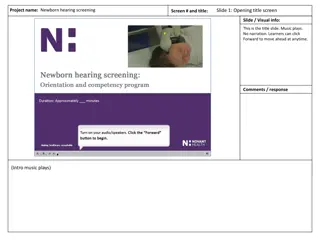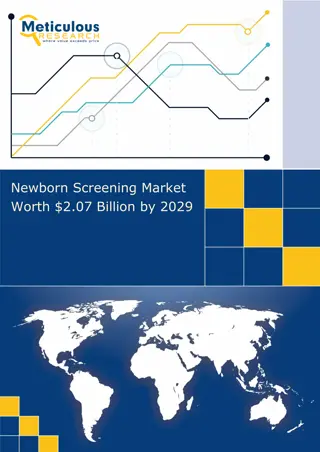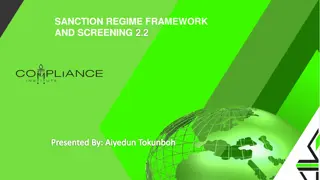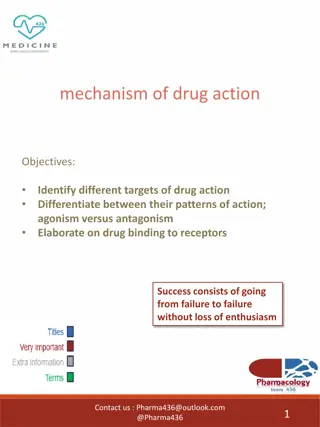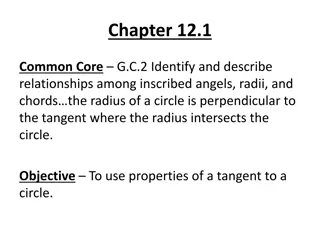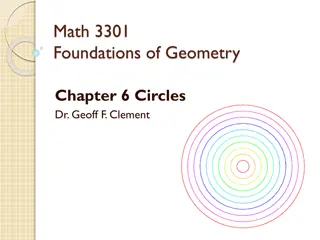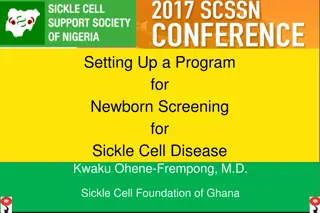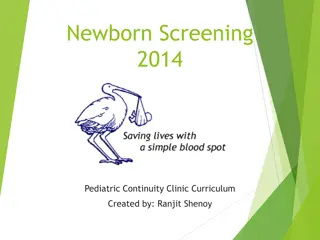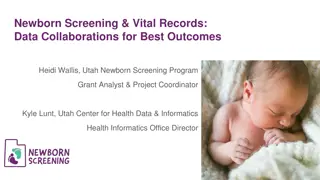Understanding Newborn Screening and T-Cell Receptor Excision Circles
The content discusses the importance of newborn screening, characteristics of disorders, T-cell receptor excision circles (TRECs), and the identification of severe conditions like SCID through TREC assay. It highlights the significance of early detection and treatment, emphasizing the value of high-throughput screening methods and the potential future directions in TREC assays for genetic disease screening.
Download Presentation

Please find below an Image/Link to download the presentation.
The content on the website is provided AS IS for your information and personal use only. It may not be sold, licensed, or shared on other websites without obtaining consent from the author. Download presentation by click this link. If you encounter any issues during the download, it is possible that the publisher has removed the file from their server.
E N D
Presentation Transcript
Newborn Screening Characteristics of Test Characteristics of Disorders Well characterized pathogenesis Affects a significant number of infants Undetectable by routine examination Result in devastating consequences if not diagnosed/treated early Disease-altering treatment available High sensitivity and specificity Amenable for high- throughput screening Favorable cost-benefit analysis Low risk to infant Means of providing follow up Chase. Curr. Opin. All. Imm. 2010, 10:521 5256
T-Cell Receptor Excision Circles (TRECs) Generation of a unique T-cell receptor (TCR) clone begins by random selection and combination of TCR regions in germ line DNA The excised DNA sequences form a non- replicating episome TREC-positive cells are recent thymic emigrants Chase. Curr. Opin. All. Imm. 2010, 10:521 5256
T-Cell Receptor Excision Circles (TRECs) TRECs can be detected in peripheral blood by quantitative PCR TREC levels correlate with numbers of na ve T- cells Low TREC levels associated with SCID, diGeorge syndrome, congenital lymphopenia Hazenberg. J. Mol. Med. 2001, 79:631 640
T-Cell Receptor Excision Circles (TRECs) 2008: Wisconsin became first state to include TREC quantitation in the newborn screen 2009: The first infant with SCID identified in Massachusetts* 2010: TREC assay added to New York newborn screen * Hale. J. All. Clin. Immunol. 2010, 126:1073 4
TREC Assay Pitfalls and Future Directions Reference ranges have not been established for neonates < 37 weeks corrected gestation Many abnormal TREC results have lead to diagnosis of undefined T-cell immunodeficiencies; without identifying underlying genetic defect optimal management remains uncertain Multi-plex quantitative PCR methods are being developed to screen for additional genetic diseases




